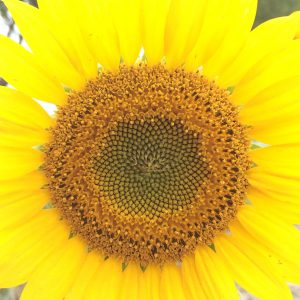 Since it seems unlikely that Chris will be posting one of his marvellous pictures today, I made this with my iPhone this afternoon – taken from the side of the road somewhere in the South of France.
Since it seems unlikely that Chris will be posting one of his marvellous pictures today, I made this with my iPhone this afternoon – taken from the side of the road somewhere in the South of France.
Ever since my oldest son has developed a deep interest in flower arrangements, I’ve seen more flower art in my house than in my entire previous adult life. But the sunflower doesn’t need arranging: it’s most beautiful standing by itself, or with a few other sunflowers – each of them being a little piece of art in themselves.
{ 13 comments }
Chris Bertram 07.31.16 at 7:34 pm
Thanks Ingrid, marvellous image and I’m very glad you did this as I missed last week for family reasons too. Hope to be back in action next Sunday.
Alan White 07.31.16 at 9:58 pm
It’s floral mathematics! Beautiful indeed.
ZM 08.01.16 at 2:41 am
That’s a beautiful photo Ingrid! I forgot about your son doing flower arranging and the florist who was giving him flowers. It must be nice having such a lot of flowers in your house :-)
Val 08.01.16 at 11:44 am
Beautiful. You’ve inspired me to put some more photos on my blog soon. Have to remember the world is still beautiful.
Val 08.01.16 at 11:50 am
But you know that popular science guy, whose name I’ve temporarily forgotten, was giving a plug for his program on tv here tonight, and he said that nature “follows the rules of mathematics”. Nope, nope, nope.
(Look at nature, obediently following the rules we clever people have made. Carolyn Merchant would suggest ‘men’ have made, but I won’t labour the point.)
(Not having a go at you in particular Alan White, your comment just reminded me of that annoying character.)
Alan White 08.01.16 at 2:39 pm
No offense taken. Bill Nye the Science Guy? The photo just reminded me of the Fabonacci series.
bianca steele 08.01.16 at 2:47 pm
Val, here I am agreeing with you on the other thread, and come here and find you’re calling math a tool of the patriarchy! :(
Val 08.01.16 at 6:07 pm
Brian Cox https://en.m.wikipedia.org/wiki/Brian_Cox_(physicist) – do you know him? I’d link the trailer but I don’t think you’d be able to see it as it’s from Australian TV (in this case).
Anyway I got it wrong – he actually said that things like snowflakes and starfish “arise spontaneously from basic laws of physics” and later that “mathematics is the universal language”. Same problem though. The “laws of physics” or the language of maths explain and describe, they don’t create that which they are describing. But Carolyn Merchant has a very long discussion on the patriarchal nature of enlightenment science which I probably can’t do justice here, I’d just urge people to read ‘The death of nature’ if you haven’t already.
Val 08.01.16 at 6:12 pm
And just to clarify, I’m not saying that maths and science are inherently wrong or patriarchal. Just that when people privilege them in that way, it harks back to the ‘Man’ as superior to ‘Nature’ worldview that Merchant describes (as distinct from an ecological perspective which understands human beings as part of ‘nature’ or the ecology).
peterv 08.01.16 at 9:01 pm
@Val:
Mathematics can indeed create the reality it describes. See Tupper’s self-referential formula:
https://en.m.wikipedia.org/wiki/Tupper%27s_self-referential_formula
Alan White 08.01.16 at 9:09 pm
Ah Brian Cox–yes I’ve seen some of his stuff. And thanks for the references.
William Berry 08.01.16 at 9:28 pm
When Brian Cox was mentioned, I immediately thought of the actor. He is very good at playing macho ass-holes, so maybe he would be good at playing Brian Cox!
Agree whole-heartedly with Val on the math thing. There is a streak of neo-platonism in mathematics (mostly in pure math, but in physics, to a considerable degree, as well) that is really little more than a high-falutin form of religious belief (this is true of any belief that posits an essential, or noumenal, reality).
Andrew Norris 08.02.16 at 4:14 am
I see color, contrast, symmetry, broken symmetry, quasicrystallinity, dislocations, fractal structures, and most of all the compound beauty of a sunflower. It shouts summer.
Comments on this entry are closed.